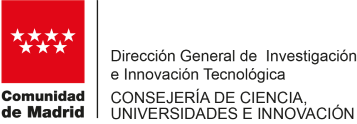
Welcome to A4liveCell Blog #9!
The Free Radical Theory of Ageing
Ageing is an intrinsic biological process characterized by the gradual decline in cellular and molecular function over time. It involves disruptions in normal cellular mechanisms, the buildup of damaged molecules and toxins, changes in gene expression, and weakened immune and stress responses. Although extensively studied, the fundamental mechanisms underlying ageing remain incompletely understood. According to the Free Radical Theory of Ageing (FRTA), one contributing factor to ageing is the accumulation of molecular damage caused by Reactive Oxygen Species (ROS) produced during normal metabolic processes.
1. Sources and Consequences of ROS
Mitochondria are the primary source of ROS in cells. During the electron transport chain, electrons can react with oxygen, forming superoxide (O2·-), which is then converted into hydrogen peroxide (H2O2) by the enzyme superoxide dismutase (SOD). When H2O2 encounters iron ions (Fe2+), it produces hydroxyl radicals (HO·), which are highly reactive and capable of damaging essential biomolecules like DNA, proteins, and lipids. This oxidative stress is linked to the aging process as it leads to structural and functional impairments in cells.
2. The Link Between ROS and Aging
There is significant evidence supporting the connection between ROS levels, oxidative damage, and aging. Key findings include increased ROS production with age, mitochondrial dysfunction, and the association of oxidative stress with age-related diseases. Comparative studies across species with varying lifespans reveal a negative correlation between lifespan and ROS levels, suggesting that species with longer lifespans experience less oxidative damage.
3. Hallmarks of Cellular Aging
Two critical biomolecules are strongly linked to lifespan: mitochondrial DNA (mtDNA) and membrane fatty acids. Due to its proximity to ROS production, mtDNA accumulates deletions over time, resulting in genomic instability. Likewise, unsaturated fatty acids in cellular and mitochondrial membranes are particularly vulnerable to oxidative damage, with a higher degree of unsaturation associated with shorter lifespans.
4. Measuring ROS in Aging
Measuring ROS in living cells is challenging due to their short lifespan and high reactivity. Traditional fluorescent probes face issues like low specificity and cytotoxicity. To address these limitations, A4Cell developed the CytoCHECK SPAchip® OHrad system, which uses suspended planar array chip (SPAchip®) technology to dynamically detect intracellular hydroxyl radicals. This innovative system allows long-term monitoring of ROS levels without disrupting the cell’s physiology or metabolic state, offering a more accurate and comprehensive view of oxidative stress.
5. Conclusion
Aging is a complex process closely tied to oxidative stress and the activity of ROS. While the Free Radical Theory of Aging provides a foundational perspective on ROS-induced cellular damage, emerging research highlights the dual role of ROS as both harmful and beneficial, depending on cellular context. Advances in ROS detection, such as the CytoCHECK SPAchip® OHrad system, offer new opportunities for researchers to monitor ROS dynamics, uncover causal relationships, and develop interventions to mitigate the impact of oxidative stress on cellular health and longevity.
Get ready for the future with A4Cell’s CytoCHECK SPAchip®, where innovation in cellular detection meets therapeutic advancement!
Share your experiences with us, and let’s collaborate to build something remarkable together!







